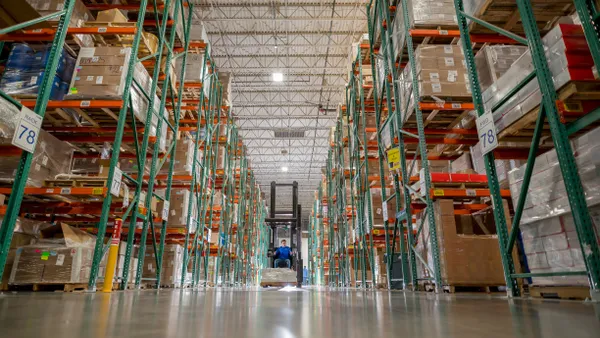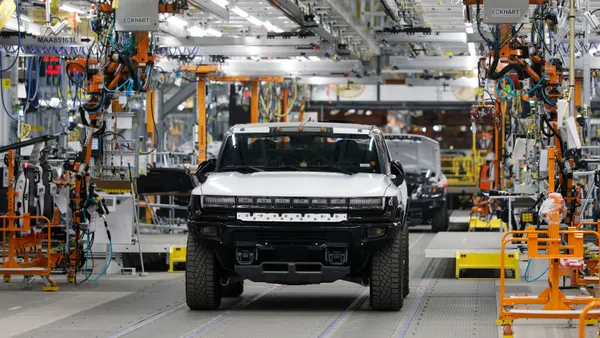Dive Brief:
- Logistics and fulfillment companies have increased their investment in information technology by millions of dollars in recent years. IT line items have grown as these companies invest in new technology with the stated goal of becoming more efficient and faster to meet the growing demands of faster shipping for more packages, according to a Supply Chain Dive review of annual reports.
- UPS saw the largest increase in its IT spending — it grew from $435 million in 2016 to $709 million in 2018.
- Multiple companies highlight spending on facilities in their annual reports. UPS began using a new cloud-based warehouse management system (WMS) in 2018. "The result has been better visibility, more rapid onboarding of customers and improved flexibility and response times," the company's annual report reads.
Dive Insight:
The robots zooming around the floor of an Amazon fulfillment center are often where the mind travels when thinking about warehouse technology. But spending on warehouse IT comes in many forms from state-of-the-art WMS software to rugged tablets. And companies are spending more in these areas, hoping to meet the growing demands of fast fulfillment, along with two-day and one-day shipping
The implementation of a modern WMS will be a major investment for many operations professionals over the next five years. Currently, about 38% of respondents in a recent Zebra Technologies survey said they were using a "best-in-breed" WMS, but this is expected to grow to around 54% by 2024, Mark Wheeler, the director of Supply Chain Solutions for Zebra, recently told Supply Chain Dive.
Modern WMS can more easily connect to the multitude of devices that a company might have on the floor at any given time to easily leverage the data being collected. These new software systems also have better labor and yard management processes. The next frontier for these systems, Wheeler said, is to integrate with the Internet of Things sensors and use the real-time information to inform operations.
Today, a majority of warehouse operators use their WMS for shipping and inventory tracking, but the Zebra survey found many plan to use these systems for reverse logistics going forward. And not all IT spending goes toward WMS. Zebra's survey found warehouses plan to increase the use of a number of technologies including wearables, machine learning and RFID.
These kinds of investments can give a company a competitive advantage, according to XPO CIO Mario Harik. Investments at XPO include algorithms that can predict returns and help e-commerce customers better plan inventory and analytics to optimize workforce on a daily basis.
"We're focused on using innovation to differentiate our services and deliver tangible value to our customers and investors," Harik said in a statement emailed to Supply Chain Dive.
This story was first published in our weekly newsletter, Supply Chain Dive: Operations. Sign up here.















